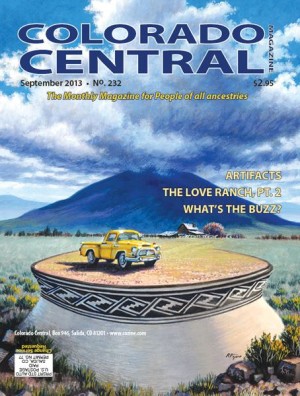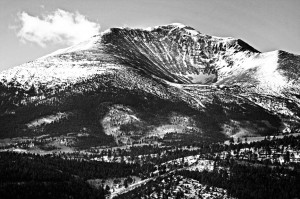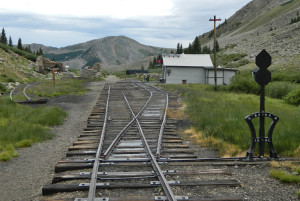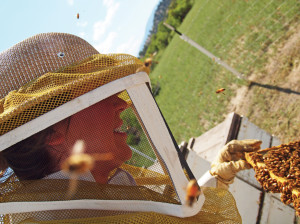Season of Terror: The Espinosas in Central Colorado, March-October 1863
By Charles F. Price
University Press of Colorado, 2013
ISBN 978-1-61732-236-8
$34.95, cloth, 352 pages
Reviewed by Forrest Whitman
A new book about an old terrorist threat is getting a lot of press in Central Colorado lately. Felipe and Vivian Espinosa, and later their nephew Jose Vicente, terrorized Colorado in 1863 (some would extend that threat into 1864). By some accounts they hoped to lead a revolt against the U.S. Government at a time when the U.S. was gradually taking control of New Mexico and Southern Colorado. By some accounts they killed upwards of forty people, all innocent Anglos. They themselves boasted that the kill was 42 Anglos, but other authorities point to 32. At least one of the murdered was of Salida interest. The victim, Henry Harkins, has descendents who knew Harkins well.
The Espinosa stories go on and on. Colonel Inman’s famous book “The Old Spanish Trail” has the Espinosas leading a minor revolt. He cites no less an authority than the old tale teller Dick Wooton on that point. There have even been accounts told about the heads of the Espinosas being preserved in alcohol in the basement of the state capitol in Denver. At least a dozen different stories depict Tom Tobin bringing the severed heads of the two brothers to Colonel Tappan and throwing them on the dance floor during a reception. Charles Price sets out to research all of these many stories and find out something of the truth. He does a good job.
One misunderstanding has long been about exactly when the terrorist outbreak happened. A generally reliable source is the James Perkins book “Tom Tobin.” Tobin is the man who eventually managed to track and kill Felipe, after the U. S. Army killed Vivian. Perkins dates the outbreak of the Espinosa rampage in the spring of 1863, but carries it on into the spring of 1864. This new Price book convincingly refutes that claim. He is sure the killings started in March of 1863, but were done by October. He verifies this in a good many ways and is pretty convincing on the point that Tom Tobin killed Felipe in the fall, probably October. That’s why Price calls his chronicle Season of Terror: March – October 1863. Price also sets a fairly low number of Anglos actually killed. He thinks it’s not over ten or twelve. While this reviewer is something of a Colorado history buff, I’m not ready to weigh in on the historical minutiae. Price does a convincing job on the many points in dispute and has obviously been careful in his research.
Of more interest to the general reader will be Price’s “big picture” account of the period. He points out with clarity just why the Mexican population felt so angry and disenfranchised following the “Mexican War.” They woke up one morning to learn they were now expected to apply for U. S. citizenship. They saw themselves regularly referred to as “greasers” in the press of the time. Their religion was disparaged. They were placed under military governors they had never seen and were subjected to laws they could hardly read written in a foreign language. The “Mexican and Indian revolt” of 1847 was certainly in the background for Felipe and Vivian, whether or not they fought in it.
Every biographer of the Espinosa brothers comes to a conclusion about why they went on their spree of killing and robbing. Price thinks they were small-time robbers but hardly merited being burned out by the army (and their families left destitute) in the January snow of 1863. Sounds like a convincing motive. Price is a good narrative writer, and this is the best book yet on the famous Espinosas of Central Colorado.
Wildflowers of the Mountain West
By Richard M. Anderson, Jay Dee Gunnell and Jerry L. Goodspeed
University Press of Colorado, 2012
ISBN: 978-0-87421-485-4
$24.95, paper, spiral, 302 pages
Reviewed by Virginia McConnell Simmons
Here is a user-friendly wildflower guide that vacationers and residents will want in their glove compartments when they are out for a drive or a short walk. This volume will be welcomed by anyone who has struggled to identify flowers in books with black-and-white photos and text in small print.
The three botanists who created this book obviously care about flesh-and-blood wildflower viewers like you and me. Along the outside margin of the binding, color blocks send one quickly to the right ballpark – white, yellow, orange and so forth. Next, each species has two clear photographs in color – one close up and one the way that a plant looks in its habitat. Then, the basic information about each species is outlined succinctly in print that is large enough to read, and on each page a map of the Western region, even the West Coast, shows where a species is likely to be found. And lastly, the volume is spiral bound so it will obediently lie open during examination of a plant if the wind is blowing.
But make no mistake – the authors are professionals at Utah State University, so they have also included material in the front and in the back with drawings of flower parts, a list of common botanical terms, a bibliography, an index and a key to species (thoughtfully printed with screened blocks of color).
Is the guide complete? Emphasizing well-known regions and zones, it does slight some marginal semiarid areas like the San Luis Valley, and Cactaceae, which can have lovely flowers indeed, are not included, so aficionados may want more than one guide. The Denver Botanic Gardens’ Meet the Natives (Pruett Publishing, black and white) is more inclusive and is arranged by plant zones, plains to alpine, while Dodson and Dunmore’s Mountain Wildflowers of the Southern Rockies (University of New Mexico Press, color) is another good choice for our area. In any case, climate will impact what is abundant, common or scarce from year to year.
This reviewer, Virginia McConnell Simmons, who can’t decide which hobby she enjoys more, wildflowers or birds, carries a large bag of books about both in the back seat.




